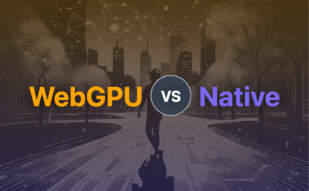Native is a software development company specializing in native code, focusing on efficiency and performance by compiling directly to machine code for specific processors and operating systems. They emphasize security, reliability, and speed in their applications, with a preference for low-level operations.

For those exploring alternatives to Native, options encompass various technologies such as Metal, OpenGL, Vulkan, OpenCL, WebGPU, WebGL 2, WASM, CUDA, and more, each offering distinct advantages in different technical contexts.
Metal
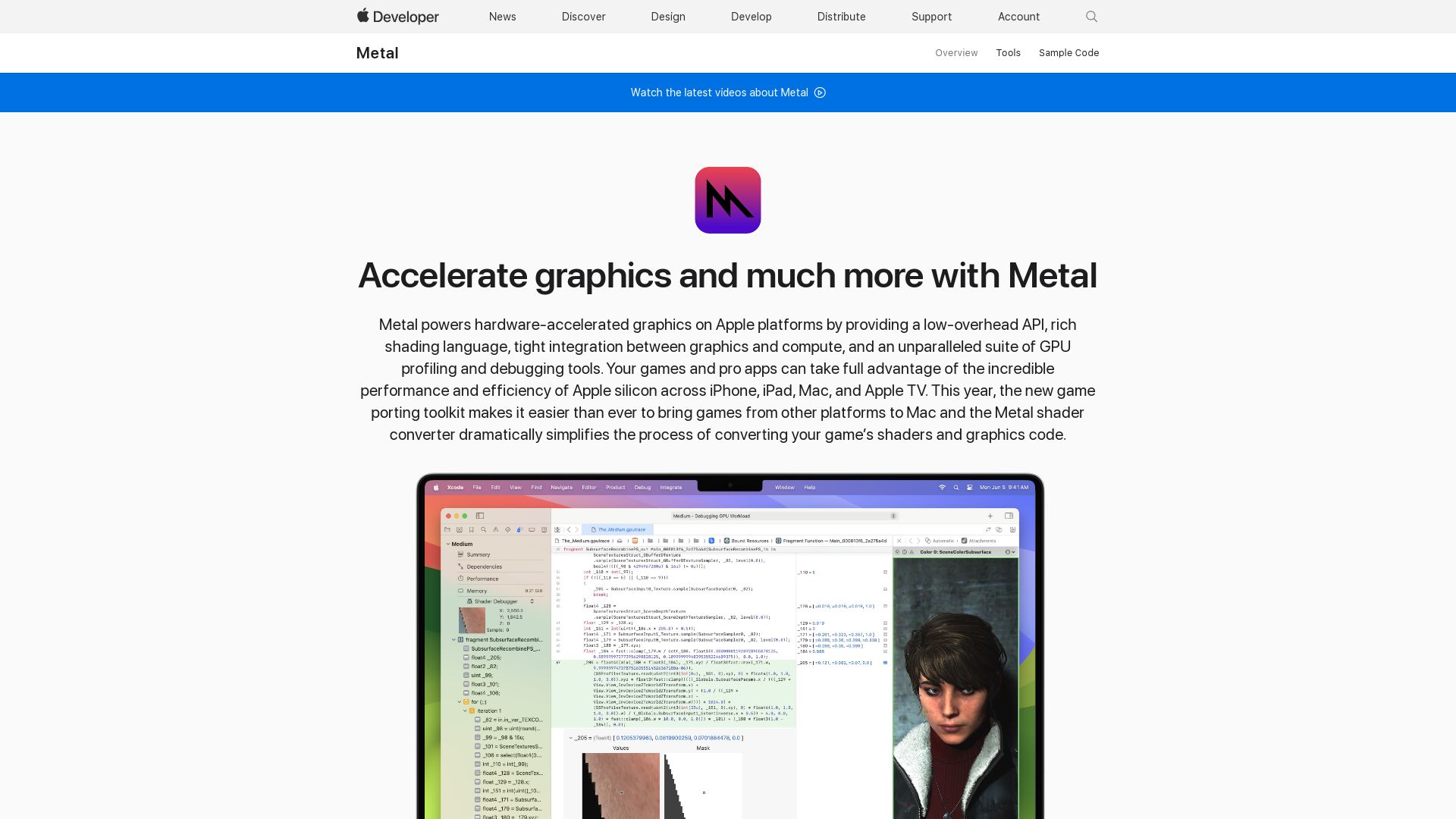
Developed by the tech giant, Apple Inc, Metal is a robust API that enables close to direct access to your device’s Graphics Processing Unit (GPU). Its core application extends to Apple platforms, promoting high-quality graphics in gaming and professional avenues.
Best Features of Metal
- Rich Shading Language: Lends elaborate visual effects and complex materials to the game graphics.
- Low-Overhead API: Reduces CPU load, thereby scaling up overall device performance.
- Compatibility: Seamlessly fits into Apple devices with an A7 chip or later.
| Feature | Role |
|---|---|
| Upscaling & Anti-aliasing | Boosts the game’s graphics performance considerably. |
| Development | Metal was built before Vulkan API, offering better graphics support. |
| Performance-oriented Support | Can handle up to 100 times more draw calls than OpenGL. |
Metal Downsides
- Incompatibility: Only supports Apple devices.
- Not harmonious with all graphics APIs.
Metal Pricing
Since Metal is a proprietary product of Apple Inc., it is mostly deemed as free for use on Apple platforms. However, the cost of Apple devices and applications may indirectly include the API utility pricing.
Metal Use Cases
Gaming Applications
For game developers aiming to create visually rich and engaging games on iOS, Metal is an excellent choice. It allows for an intricate detailing in the texture of game materials like trees, hair, and fur.
GPU Computing
Metal’s application extends beyond rendering high-end graphics. Its low-overhead API can also be leveraged to enhance the efficiency of GPU computations.
Machine Learning
Metal supports popular Machine Learning frameworks like TensorFlow, PyTorch, and now JAX, enabling high-performance training and inference on GPU.
OpenGL

Created by Silicon Graphics in 1992, OpenGL (Open Graphics Library) is a versatile, low-level rendering and modeling software library focused on hardware-accelerated 3D graphics, Augmented, and Virtual Reality. It continues to play a pivotal role in video gaming, CAD, and scientific applications across different platforms.
OpenGL Top Features
- Hardware-Accelerated 3D Graphics: Designed for high-end graphics processing.
- Versatility: Used in diverse applications, including video games and scientific modeling.
- Regularly Updated: OpenGL launches routine specification updates, enhancing functionality and performance.
- Advanced Hardware-Specific Features: Extensions connect to hardware features elevating their usability.
- Compatibility with OpenGL ES: OpenGL 4.1 offers compatibility with OpenGL ES 2.0, expanding the libraries’ usability.
| Feature | Description |
|---|---|
| Shading Language 4.20 | This feature in OpenGL 4.2 supports new buffer and shader accesses. |
| Indirect Drawing | Introduced in OpenGL 4.0, this feature increases drawing efficiency. |
| Compute Shaders | With OpenGL 4.3, compute shaders enhance on-chip computations drastically. |
OpenGL Limitations
- C++ Prerequisite: A solid understanding of C++ programming language is required to use OpenGL effectively.
- Mathematical Knowledge: OpenGL software coding involves extensive usage of linear algebra, geometry, and trigonometry.
OpenGL Use Cases
Use case 1: Video Gaming
With its low-level rendering and powerful 3D capabilities, OpenGL is the optimal choice for video game development. Commercial games like ID Software’s Quake series utilise OpenGL for their graphics engines.
Use case 2: CAD
OpenGL’s flexible and precise rendering makes it an excellent tool for Computer-Aided Design (CAD). These features enable more detailed and realistic 3D modelling.
Use case 3: Scientific Applications
For scientific applications, OpenGL’s math-driven design and robust 3D rendering capabilities offer invaluable benefits, enhancing visual representations of complex data sets.
Vulkan
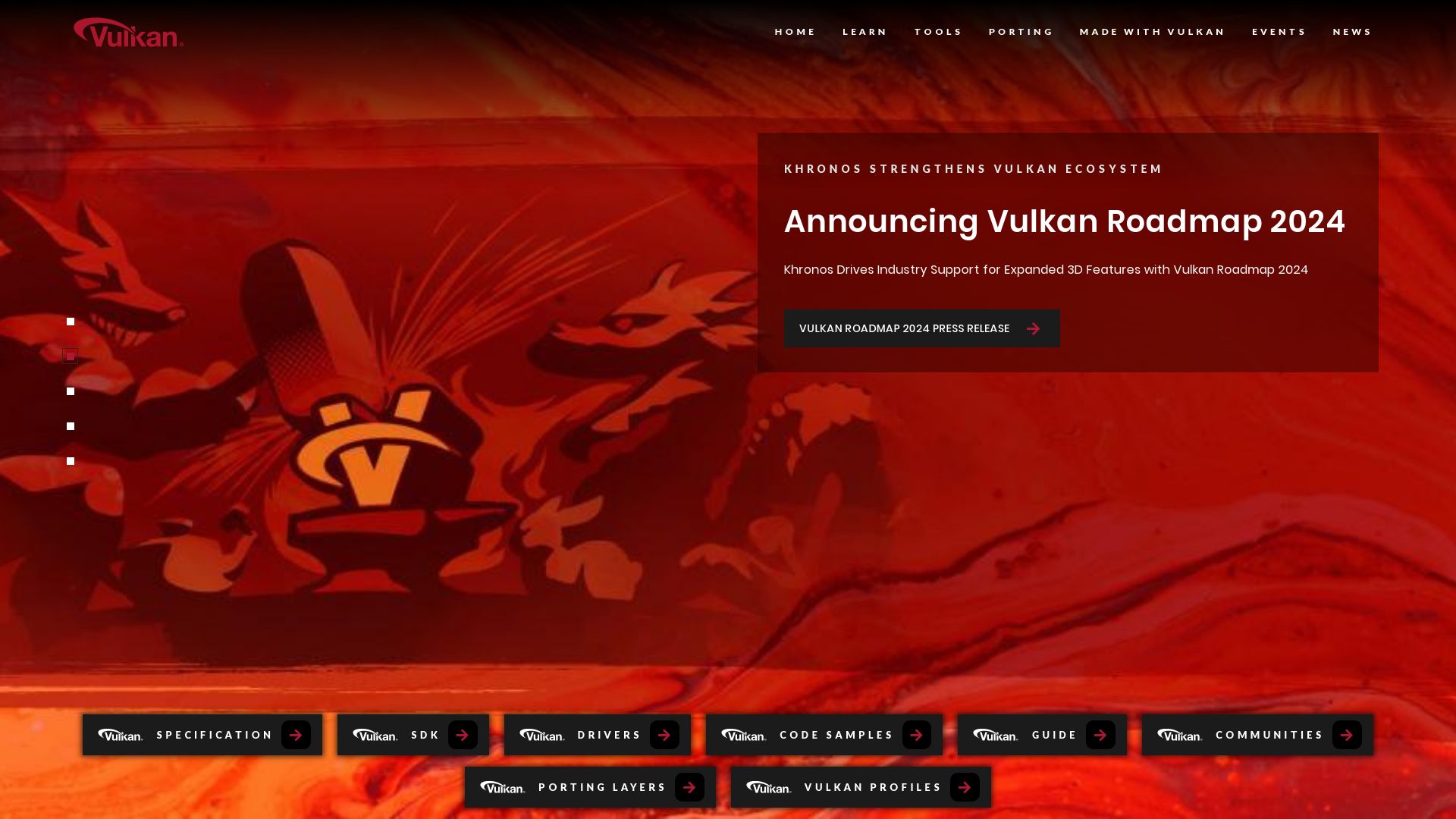
Introducing Vulkan, a cross-platform industry standard graphics API catering to the diverse needs of developers. Vulkan is on the cutting edge of technology, evolving continuously and integrating hardware-accelerated video compression for robust graphics performance.
Vulkan Top Features
- Frequent extensions and improvements for increasing capabilities.
- Integration of ray tracing into the Vulkan framework for superior 3D rendering.
- Achieves efficient shader synchronization and optimization for parallel execution.
- Hosting valuable Vulkan extensions for mobile thus enriching the state of graphics APIs.
- Fine control over scheduling, synchronization, and memory allocation.
| Vulkan 1.3 | Significant milestone in reducing feature fragmentation. |
| Vulkan SC 1.0 | Aligns graphics and compute requirements for safety-critical systems. |
| Alloy usage | Employs Alloy for precision in memory operations between multiple threads and devices. |
Vulkan Limitations
- Lack of firm timelines and device support provisions, leading to occasional developer confusion.
- Fragmentation can be a challenge, even though Vulkan Portability aims to address this.
Vulkan Use Cases
Use case 1
Vulkan is instrumental for developers embarking on their graphics programming journey. Its comprehensive features serve as an efficient companion.
Use case 2
For developers seeking to render photorealistic 3D models in real-time, Vulkan’s hybrid viewport technology closely mimics the look and feel of the real world.
Use case 3
Vulkan also caters to safety-critical systems, aligning graphics and compute requirements via the Vulkan SC 1.0 specification.
OpenCL
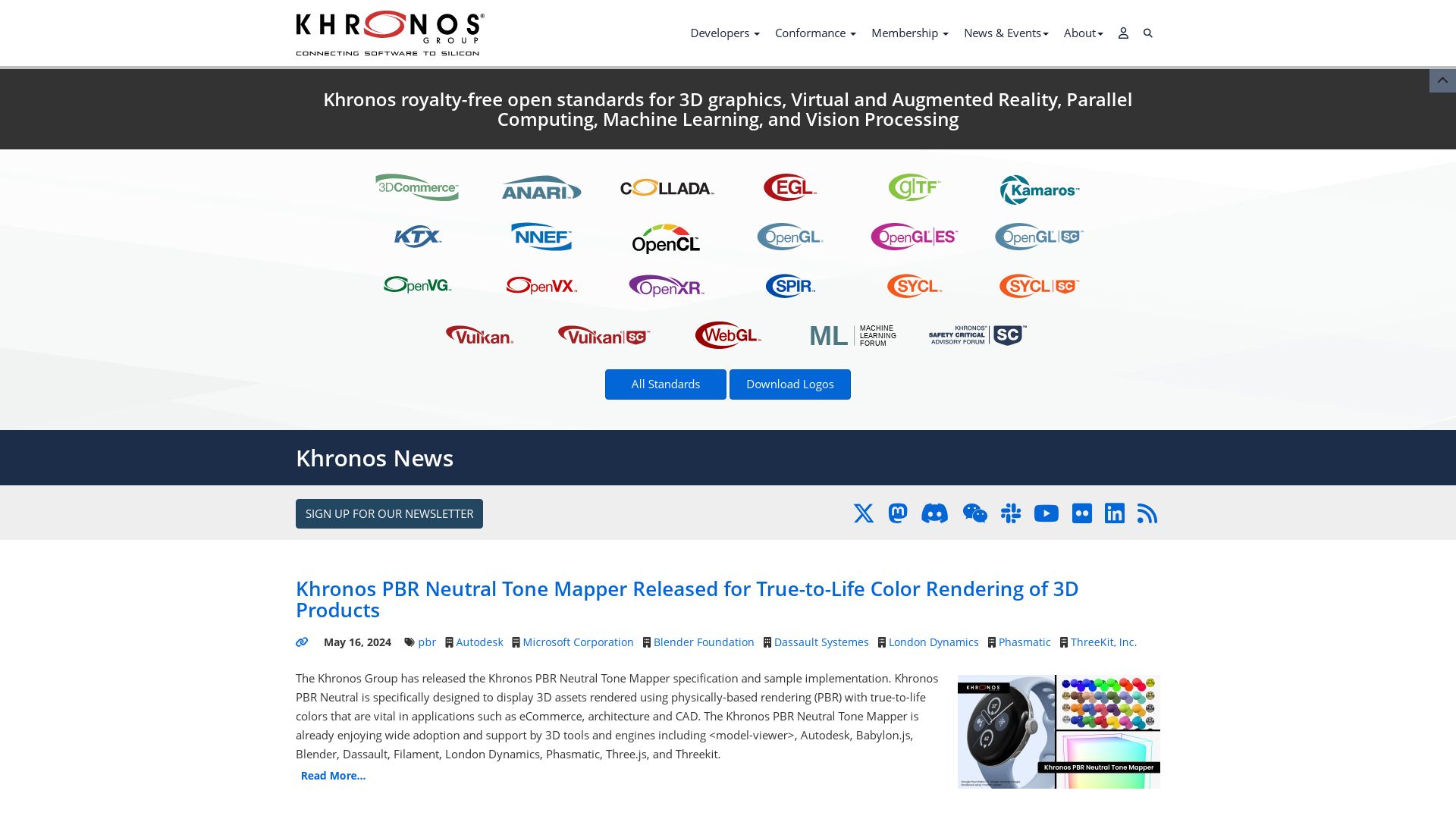
Enter the realm of OpenCL: a heterogeneous programming platform allowing applications to run across a variety of devices. From GPU to CPU, from Windows to Linux to macOS, OpenCL provides a one-stop solution.
OpenCL Top Features
- Provides a heterogeneous programming platform versatile enough to run applications on multiple devices.
- Supports C/C++ and combines these with other languages to simplify and streamline programming.
- Features native support for parallel computing, launching kernels on multiple GPU cores for efficiency.
- OpenCL is an open-source, cross-platform tool, enhancing its portability and interoperability.
| Feature | Description |
|---|---|
| Portability | OpenCL can be installed across a wide range of devices due to its open-source, cross-platform nature. |
| Debugging & Profiling Capabilities | OpenCL provides a robust, unified environment for debugging, thereby enhancing the development experience. |
| Market Versatility | From supercomputers to embedded platforms, OpenCL accelerates applications in various market categories. |
OpenCL Limitations
- Performance-wise, OpenCL often exhibits lower speed compared to CUDA due to CUDA’s optimization for Nvidia’s architecture.
- OpenCL’s community isn’t as expansive as CUDA’s, although it is steadily growing.
OpenCL Pricing
Since OpenCL is an open-source standard, it’s absolutely free to use. This feature aids in promoting greater accessibility and widespread adaption of the platform.
OpenCL Use Cases
Use case 1
OpenCL is exceptionally helpful when porting applications between different host devices thanks to its runtime compile design.
Use case 2
Developers seeking a tool for heterogeneous programming find OpenCL an excellent choice as it operates seamlessly across a wide range of hardware devices.
Use case 3
For developers that rely on robust debugging and profiling capabilities, OpenCL delivers. Its unified environment provides efficient fault detection and analysis.
WebGPU
WebGPU is a promising new API by W3C’s ‘GPU for the Web’ group, aimed at drawing from modern GPU functionalities to provide enhanced programming capabilities on browsers. This innovative technology is specifically designed to mitigate the limitations of WebGL, paving the way for superior graphical representation and machine workloads.
WebGPU Top Features
- Reflects modern GPU hardware functionalities.
- Offers significant programming possibilities on the browser.
- Brings advancements of Direct3D 12, Metal, and Vulkan APIs to the web.
- Enables complex visual effects and machine learning computations.
- Pioneered by tech giants – Apple, Google, Mozilla, Microsoft, and Intel.
| Attribute | Description |
|---|---|
| Compatibility | WebGPU is available in Chrome 113 on ChromeOS, macOS, and Windows |
| Resource Management | Efficient computational resources management with compute shaders, offering a flexible programming model |
| Support | Supports in-progress WebGPU ports in popular JavaScript WebGL libraries |
WebGPU Limitations
- Early stage of development
- Currently, default disabled as a WebGL successor
- Extended compatibility for platforms like Android and Linux under future plans.
WebGPU Use Cases
Use case 1
For developers and mobile game studios, WebGPU offers the ability to port complex algorithms to the GPU, allowing for the realization of intricate visual effects and the execution of machine learning computations in-browser.
Use case 2
For infrastructure developers, not only does WebGPU minimize JavaScript call overhead and handle resource synchronization automatically, but it also provides detailed error messages in the console for easier troubleshooting.
Use case 3
WebGPU can unlock an impressive performance boost for browser-based applications, with more balanced CPU/GPU usage than WebGL, due to its roots in Vulkan, a high-performance rendering API.
WebGL 2
WebGL 2 signifies a leap forward in the realm of 3D technology. Anchored in rasterization, WebGL 2 employs depth buffers to achieve spectacular visual depth in 3D visuals, yet it demands a firm grip on complex mathematical concepts such as matrix math, normalized coordinates, and frustums.
WebGL 2 Top Features
- Advanced rendering: WebGL 2 harnesses the power of the GPU to process geometric primitives in parallel, facilitating the creation of highly interactive virtual experiences.
- Unique technologies: Phong materials lend themselves to create high-performance 3D applications with stunning visuals.
- Lighting and texture: The implementation of specific techniques for lighting, texture coordination, and surface blending renders 3D scenes realistically.
- JavaScript Object Notation (JSON): This is leveraged for defining, storing, and loading complex geometries, promoting efficient data handling.
- New and advanced features: WebGL 2 expands on its ancestor by introducing a suite of new features, including support for light reflection and texturing.
| Key Functionality | Details |
| Advanced techniques | Employs techniques like frustum-based rendering for creating compelling, immersive scenes. |
| “Divide and Conquer” Approach | Uses this approach to render objects efficiently, much like those in word processing programs. |
WebGL 2 Limitations
- Complex understanding: Advanced use requires a deep understanding of mathematical concepts such as matrix math and normalized coordinates.
- Developer dependency: The key aspect of providing all 3D math falls upon the developer, as WebGL 2 doesn’t handle 3D math itself.
- Hands-on approach: To harness its capabilities efficiently, WebGL 2 demands a hands-on approach from developers.
WebGL 2 Use Cases
Use case 1
WebGL 2 turns out to be an exceptional tool for professionals involved in graphics, game development, or any domain requiring advanced 3D rendering. Its capacity to use GPU for processing geometric primitives in parallel can efficiently drive intricate designs.
Use case 2
For data scientists and those working with complex geometries, WebGL 2’s use of JSON offers a robust scheme for efficiently defining, storing, and loading those geometries, thereby facilitating data manipulation.
Use case 3
For application developers seeking to render realistic graphics, WebGL 2’s detailed and meticulous texturing, lighting, and reflection capabilities offer an array of tools to produce visually arresting applications.
WASM
WebAssembly, commonly known as WASM, is an empowering tool welcomed by the global tech community since its establishment in 2017. Supported by all major browsers, it enhances website performance while offering an inclusive environment for developers to work with multiple languages, harnessing a sense of digital unity.
Top Features of WASM
- Optimizes website performance to near-native speed.
- Endorses a vast range of applications including P2P services, augmented reality, video editing, and more.
- Executes code written in various languages such as C, C++, Rust, Go and Python
- Makes JavaScript more secure, more efficient than sole use of JavaScript in browser.
- Minimizes potential vulnerability attacks using better memory management.
| Feature | Description |
|---|---|
| Performance | WebAssembly promises high performance, efficiency, and portability. |
| Compatibility | Enables code written in multiple languages to run in modern web browsers. |
| Memory safety | It delivers better memory safety and reduces vulnerability attack surface. |
Limitations of WASM
- Limited set of instructions
- Relatively new and still unknown to many developers
- Complexities in debugging and rewriting code despite text support
Use Cases of WASM
Use Case 1 – Virtual and Augmented Reality
Innovators in the VR/AR industry often run into performance issues, especially with JavaScript. WASM presents a timely solution, boosting performance for intensive use cases like VR and AR.
Use Case 2 – Scientific Simulations
WASM accelerates scientific simulations, commonly written in languages like C, C++, and Rust, by executing them at near-native speed on web browsers. This aids researchers globally, eliminating the need for additional software installs.
Use Case 3 – Front-end Developers
For front-end developers striving for more interactive and complex apps, WebAssembly turns the tables. It provides fast, efficient, and secure runtime, functional across a range of languages. A major stride towards global tech unity.
CUDA: The Revolutionary Star in GPU Programming
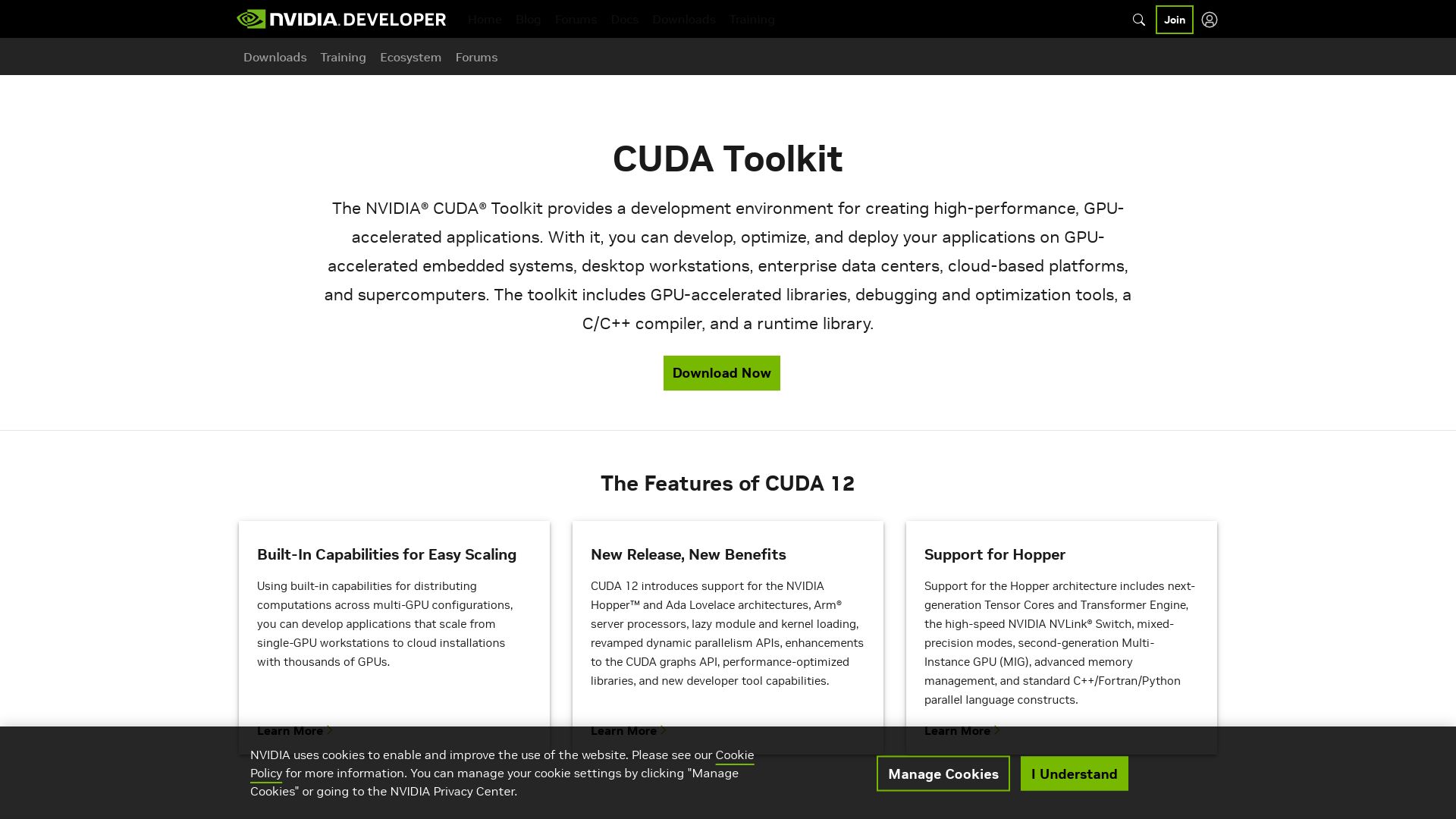
If you thought technology was at its zenith, hold onto your hats! Enter CUDA, a pioneer in the Compute Unified Device Architecture world with its roots branching out from Nvidia. This extension of C/C++ programming is not just a platform—it’s an avenue to explore parallel computing with astounding speed we never thought possible.
The Game-changers of CUDA
- A robust parallel computing platform and API model, which quickens your calculation speed like there’s no tomorrow.
- Over 100 MILLION deployed GPUs, die-hard testament to its relentless performance.
- It’s not just speedy—it’s lightning fast. Get a staggering 30-100x speed boost compared to your everyday microprocessors.
- Multiple architectures to cater to your diverse requirements, ranging from 16 Streaming Multiprocessor (SM) diagrams to the G80 card with 16 SMs.
- Supports a whopping thousands of threads per application. Numbers get you high? Then CUDA is your ticket!
| Key Feature | Benefit |
|---|---|
| 8GB/s communication channel with CPU | Remarkable speed in data transfer |
| Integrated Memory and Virtual Memory | Boosts scatter read codes and increases memory efficiency |
| GPU-accelerated library | Replaces CPU-only libraries for better performance |
Chinks in CUDA’s Armor
- It’s a bit of a lone ranger—unilateral interoperability.
- Backward compatibility is not its strongest suit—doesn’t provide support for older versions.
- While it stands tall on Nvidia hardware, it lacks adaptability—Dedicated to NVIDIA hardware only.
Unlock Limitless Possibilities with CUDA
Transform Computational Finance
Making sense of the financial maze just got easier. Accelerate your computations and take your analysis to unseen heights with CUDA.
Elevate Climate, Weather, and Ocean Modeling
Forget the usual weather forecast. Deep dive into the oceanic waves, or ascend to the height of climatic patterns with CUDA’s unparalleled simulation abilities.
Revolutionize Defence and Intelligence
Secure your frontiers with CUDA’s cutting-edge capabilities. From deciphering intricate data patterns to making strategic decisions, CUDA smoothens your journey in defense and intelligence.
Logan Bellbrook
Content writer @ Aircada with a knack for nature & AR/VR/XR. Blogging the intersection of tech & terrain.





